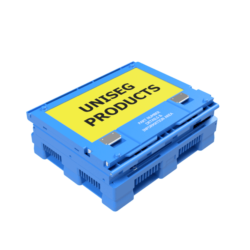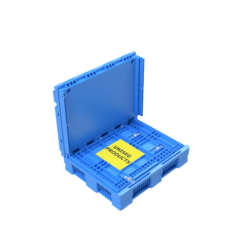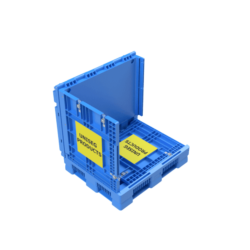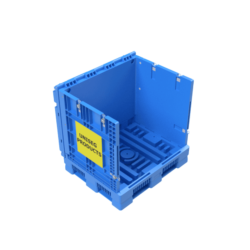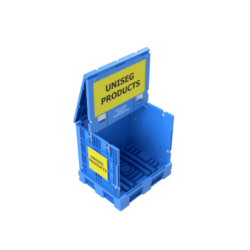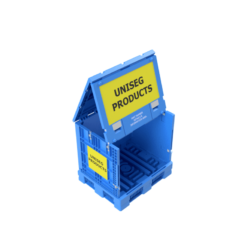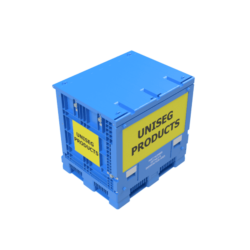Uniseg Products have completed the design of their Mark 2 Battery Transport & Storage (BTS) Container. In addition to the patented novel feature of front-loading capability and a fixed Lid the Mark 2 version has 25 design improvements including:
- Improved ergonomics regarding force required to lift front and top panel assembly.
- Reduced weight (85kg to 64kg) for easier man-handling.
- Reduced collapsed height from 570 to 422mm, to allow more efficient reverse logistics.
- Increased load bearing and tensile strength.
- Added Forklift Tyne bars to secure Container and enable rotation when unloading.
The Mark 2 BTS Container includes all the important features of the current version, including its unique, patented front load feature that enables the safe loading of heavy lead acid batteries.
It is also intended the Mark 2 BTS Container will be certified for the transport of Lithium Batteries (UN 3090 and 3480).
Uniseg Products are currently obtaining several quotes for the manufacture of the Mark 2 BTS container for global supply. The first containers are expected to become available by mid-2023.
Slideshow
BTS Container vs Plastic Bins for Used Lead Acid Battery Storage & Transport
The BTS Container delivers significant benefits compared to non-collapsible, plastic bins, including:
- Eliminates potential H&S issue loading heavy batteries into the container, due to its front load feature.
- Reduces damage caused by batteries being dropped into the container, as occurs when loading heavy batteries into a bin.
- Recent changes to the UN Dangerous Good regulation for the transport of used lead acid require the use of a lid*. In practice batteries often protrude above the height of the bin preventing the lid being secured to the bin.
- To ensure the lids can be secured users are unable to fill the bins to capacity and as a result are transporting some bins partially filled and hence additional bins are required.
- Lids being lost or misplaced and hence having to carry spares.
* In 2018 the UN Sub-Committee of Experts on the Transport of Dangerous Goods adopted new packing instruction for transporting new & used batteries (P801). The P801 Packing Instructions for used lead acid batteries when using a plastic battery bin requires the bins shall not be filled to a height greater than the height of their sides and that measures shall be taken to ensure that filled bins cannot lose their content. While the use of a lid is not specifically stipulated it is probably the most obvious way to ensure these 2 requirements are met. A detailed summary of the pros & cons of using non-collapsible plastic bins for used lead acid battery transport can be found at our sister company’s website, Battery Rescue.


